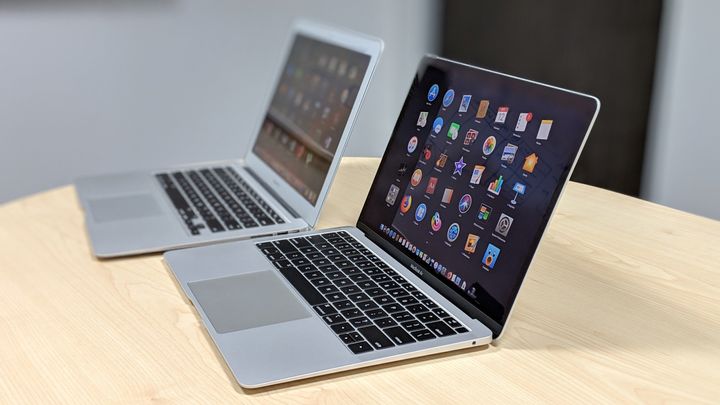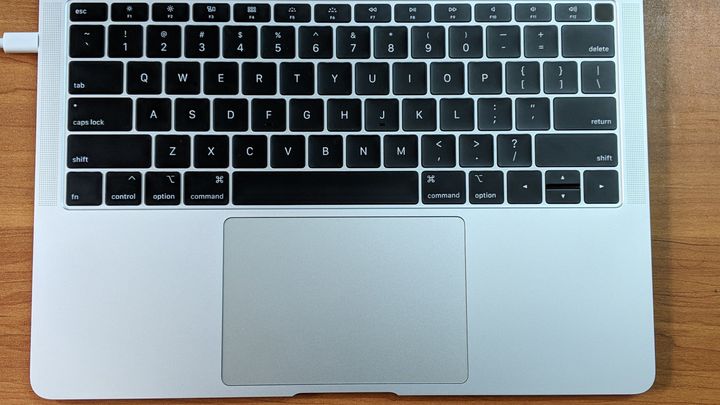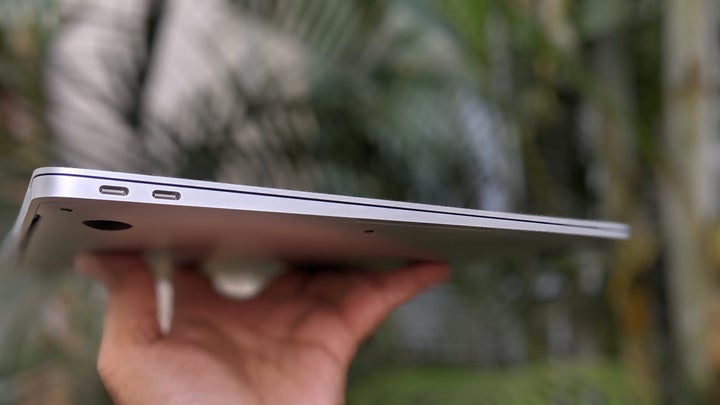No longer the poor cousin of the Pro series or the 12-inch MacBook, the new MacBook Air brings the slimmed down notebooks back in contention (and into the spotlight) with a major redesign that upgrades the Air to a 2018-spec while still retaining the iconic wedge-shaped design. That said, the years of being frozen in time have given the Windows competition plenty of time to catch up and surpass the original ultraportable, and the new pricing puts it square in the league of even more potent offerings from Dell, HP and Microsoft.
Ironically, the Air’s biggest competition – at least for the Mac faithful - will likely be the MacBook Pro without Touch ID, which is available for just a little bit more and will likely see better seasonal discounts from retailers. For some though, the original Air is “personal computing love”, so if you’re considering the jump to the 2018 Air, here are some definitive answers to some of the questions you may have.
How big is the redesign, compared to the 2017 Air?
So, the signature wedge-shape remains, but the overall footprint is significantly smaller courtesy the almost 50% smaller bezels. It’s also marginally thinner and lighter, and the end product feels like the old Air been through a proper nip-and-tuck operation, yet without compromising on strength or sturdiness. It’s still feels solid in the hand, no chassis flex whatsoever.
In terms of ports, the Air seems to have gotten the MacBook/Pro treatment—in place of the MagSafe power, regular USB ports and dedicated SD card slot, you now get two USB-C Thunderbolt 3 ports for charging and all your dongles for connecting to external displays, drives and SD card readers. The bothersome bit is that both USB-C ports are on the same side, which means one has to consciously swap the way one is sitting to accommodate the power/dongles instead of plugging in in whatever side is most convenient.
Is the Retina display on the Air all we ever wanted, and more?
Yes and no. The Retina display was clearly the most requested feature by Air users over the past several years, and the 2018 Air finally has it. If you’re unfamiliar with the term, it means that the display has a pixel density high enough for individual pixels to not be discernible from the normal viewing distance. With a resolution of 2560x1600 pixels, it’s the same size and density as the 13.3-inch MacBook Pro. There are a couple of differences though, which may swing your vote towards the mildly pricier Pro. First, it doesn’t support the wider DCI-P3 color gamut or the TrueTone tech (which allows the display to respond to ambient light temperatures) so if you’re a photographer, this will be a letdown. Second, while it is miles above the previous Air’s aging TN panel, it’s not quite as bright as the MacBook Pro’s panel (300 nits vs the Pro’s 500), something you will notice only if you place the two side-by-side or use the Air a lot outdoors.

How does it perform in day-to-day use?
It is clear Apple has opted for the Y-series variants of Intel’s 8th generation Core i5 processor to prioritize efficiency and battery life over pure performance. You get the Core i5-8210Y chip – just the one option—with 8GB of memory and 128/256GB storage variants. The fact that the Air ships with only one processor variant and you can’t spring for a higher performance chip (if you’re okay with the hit to battery life) is a bit odd.
Despite the low-power chip, the Air is sprightly in daily use, it launches apps quickly and didn’t make use of the fans or slow down even when we had 30+ tabs open in the Web browser. If your computing routine revolves around browsing the Web, using Microsoft Office, watching videos and playing some casual games, you’ll be happy with the Air. However, for more ‘pro’ tasks like Photoshop, or exporting a 4K movie edit in Premiere, the Pro is probably the better way to go even though you can hook up an external GPU over the Air’s Thunderbolt 3 port. Pit it against the similarly priced Dell XPS Windows laptop and the Air expectedly trails behind on graphically intensive workloads. Battery life lasts a full work day, if your work day is between 8 to 10 hours, which is pretty great.

How do the keyboard and trackpad fare?
For some folks, the best thing about Apple holding off from updating the old Air was that it got to retain the old scissor-switch keyboard with all of that gloriously deep key travel. Well, that’s history. The new Air has the newer 3-gen butterfly keyboard that we saw earlier this year on the MacBook Pro, a choice which continues to remain divisive—some like it, others don’t, and almost all newbies will need some time to adjust. The other big change is the addition of Touch ID (incorporated into the power button), albeit minus the Touch Bar.
The trackpad is a whopping 20% larger than the old one, and is super responsive and accurate, stuff you’ve come to expect from an Apple laptop. The speakers on both sides of the keyboard are a big win, they deliver more volume and twice the bass and are commendable as notebook speakers go.
Was the 2018 Air worth the agonizing wait?
For fans of the original, yes—although one wishes Apple hadn’t taken this long. For others, the harder decision may be whether to save a bit and pick this up or spend a little and buy a Pro instead. It’s just not that clear cut a decision anymore.

Don’t get me wrong, the Air 2018 is a good pick for folks who prefer macOS – build quality is top notch, performance and battery life are good for most folks, and the Retina display is a big leap forward for existing Air owners. The truth is that in the past 3-4 years, ever since the previous generation Air started stagnating, Windows laptops have made great strides and if you’re willing to plonk down more than a lakh on a laptop, there are a lot of excellent Windows notebooks out there. Today’s Air is solid and reliable albeit not the groundbreaking phenomenon that was pulled out of a manila envelope all those years ago.
Quick Specs:
- Display: 13.3-inch LED-backlit IPS display, 2560x1600 native resolution, 16:10 aspect ratio
- Processor: 1.6GHz dual-core Intel Core i5, Turbo Boost up to 3.6GHz, with 4MB L3 cache
- Storage: 128GB/256GB PCIe-based SSD
- Memory: 8GB of 2133MHz LPDDR3 onboard memory
- Graphics: Intel UHD Graphics 617 with support for Thunderbolt 3–enabled external graphics processors (eGPUs)
- Camera: 720p FaceTime HD camera
- Ports: Two Thunderbolt 3 (USB-C) ports with charging, DisplayPort, Thunderbolt (up to 40Gbps), USB-C 3.1 Gen 2 (up to 10Gbps)
- Wireless: 802.11ac Wi-Fi, Bluetooth 4.2
- Audio: Stereo speakers, 3 microphones and 3.5mm headphone jack
- Keyboard, Trackpad: Individual LED-backlit keys including 12 function, 4 arrow keys and integrated Touch ID sensor, Force Touch trackpad
- Battery: Built-in 50.3-watt-hour lithium-polymer battery, 30W USB-C Power Adapter, USB-C power port
- Size, Weight: 0.16–0.61 x 11.97 x 8.36 inches, 1.25kg
- Finish: Gold, Silver, Space Grey
- Price: Rs. 1,14,900 (128GB), Rs. 1,34,900 (256GB)